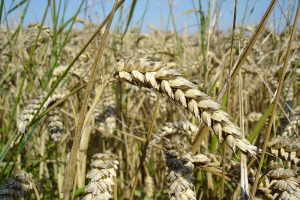 It’s easy to look at the impoverished peoples of any developed nation and think to yourself “boy, they sure have it easy.” When you compare our poor to the poor people living in the rest of the world, it’s seems obvious that our people are better off.
It’s easy to look at the impoverished peoples of any developed nation and think to yourself “boy, they sure have it easy.” When you compare our poor to the poor people living in the rest of the world, it’s seems obvious that our people are better off.
Oftentimes they can be seen with cell phones, cars, running water, a reliable source of electricity, heating and cooling, etc. It takes up a much higher percentage of their budget, but many of those people living below the poverty line in the United States still have a higher standard of living than those living in the rest of the world. And when you compare our poor to those who lived in previous eras, the divide is even wider. However, you shouldn’t be fooled by these comparisons.
The most common thing you’ll hear someone say is “in America, even our poor people are fat” which is usually followed by a good laugh. But it’s not laughing matter. When you see an obese man or woman drive up to the counter at McDonald’s on their rascal, you’re not looking at someone who is overfed. On the contrary, that person is quite literally starving to death. They may be getting plenty of calories, but in every other regard their body is falling apart due to a lack of nutrition; and it’s this, not obesity by itself, that may be one of the greatest challenges of our time.
A team of researchers in Britain has recently found that much of the world is facing a rather strange crisis. People who are obese and people who are underweight now exist in side by side in many countries, both of which are indicators of malnutrition. Much like the developed world, it has a lot more to do with what they’re eating than what they’re not eating.
The world is entering an era of global food insecurity which is already leading to the “double burden” of both obesity and malnutrition occurring side by side within countries and even within the same families, a leading food expert has warned.
It will become increasingly common to see obese parents in some developing countries raising underweight and stunted children because high-calorie food is cheaper and more readily available than the nutritious food needed for healthy growth, said Alan Dangour of the London School of Hygiene and Tropical Medicine.
“We are certainly looking at a period of increased instability in the supply of food, and also the diversity and types of food that are available are going to change,” said Dr Dangour, who is to lead a major study into global food insecurity and its impact on health.
“A result of this is called the ‘double burden’ of malnutrition,” he added. “Under-nutrition causes starvation and stunting in children, whereas obesity and over-weight in adults is another form of malnutrition, caused by eating the wrong type of food.
“The double burden exists in countries, or indeed in households, where you get a stunted child and an overweight mother. And that happens in many countries around the world as a result of the wrong diets being eaten [by adults] and the wrong diets being given to children,” he said.
Calories are more affordable now then they have ever been in human history, but it’s not enough. Policymakers and scientists have spent decades trying to figure out how to feed more people, and in a sense they’ve succeeded. Some of the strains of wheat that were developed in 20th century saved hundreds of millions of lives, but those same strains are a shadow of their predecessors, and are lacking in the essential nutrients we need to survive. They are empty calories.
Now the world is facing famine conditions that are unlike any other we’ve experienced before. We have plenty of food, but many of us are just dying slower from obesity and chronic diseases. So when you go to the grocery store, skip the deficient grains and sugary snacks, and buy real food. Otherwise, you might as well be starving yourself.
This article was originally published at Ready Nutrition™ on July 12th, 2015
 It’s easy to look at the impoverished peoples of any developed nation and think to yourself “boy, they sure have it easy.” When you compare our poor to the poor people living in the rest of the world, it’s seems obvious that our people are better off.
It’s easy to look at the impoverished peoples of any developed nation and think to yourself “boy, they sure have it easy.” When you compare our poor to the poor people living in the rest of the world, it’s seems obvious that our people are better off.





